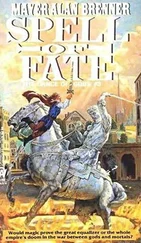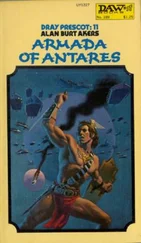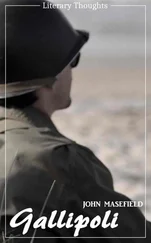Two ancient fortresses, one a square crenellated building in the town of Chanak on the Asiatic side, and the other an odd heart-shaped structure tilted towards the sea at Kilid Bahr on the opposite bank, stand guard over the Narrows, and it was here that the Turks established their main defences at the outbreak of war. These consisted of eleven forts with 72 guns, some of them new, a series of torpedo tubes designed to fire on vessels coming upstream, a minefield and, later on, a net of wire mesh to block submarines. They had in addition other heavier guns in forts at Kum Kale and Sedd-el-Bahr at the mouth of the straits, and various intermediate defences further upstream. After the first Allied bombardment of November 1914, the Germans made certain additions to this armament — notably eight 6-inch howitzer batteries which could change position fairly rapidly, and the number of searchlights was increased to eight. Nine lines of mines were laid in the vicinity of the Narrows. Along the whole length of the straits there were in all something like 100 guns.
These defences, however, were less formidable than they sound, since barely a score of the guns were of modern design, and ammunition was in short supply. Two divisions of infantry — one in the Gallipoli Peninsula and the other on the Asiatic side — were responsible for holding all the ground from the Gulf of Saros to the Asiatic coast opposite Tenedos in the event of the Allies making a landing.
The fleet which the Allies assembled to attack these obstacles was the greatest concentration of naval strength which had ever been seen in the Mediterranean. Apart from the cruisers, destroyers, minesweepers and lesser craft, the British had contributed fourteen battleships, two semi-dreadnoughts, the Lord Nelson and the Agamemnon , the battle-cruiser Inflexible and the newly completed Queen Elizabeth. The French squadron, under Admiral Guépratte, consisted of four battleships and their auxiliaries.
Although most of these battleships had become semi-obsolete their 12-inch guns were, of course, immensely superior to anything the Turks had on shore, and the Queen Elizabeth with her 15-inch guns was a more formidable opponent still. It was quite possible for the Fleet to fire on the forts at the mouth of the Dardanelles without ever coming into the range of the Turkish batteries. The only question was just how accurate this long range fire was going to be: how many forts would be knocked out before the Allied vessels closed in, as it were, for the kill?
Admiral Carden, flying his flag in the Queen Elizabeth , deployed his force in three divisions:
Inflexible
Vengeance
Suffren
Agamemnon
Albion
Bouvet
Queen Elizabeth
Cornwallis
Charlemagne
Irresistible
Gaulois
Triumph
The attack itself was planned in three parts: a deliberate long-range bombardment followed by a medium-range bombardment, and finally an overwhelming fire at very close range. Under the cover of this attack minesweepers were to clear the channel up to the entrance of the straits. For the moment, the rest of the Fleet which was not engaged on diversionary missions was held in reserve.
At 9.51 a.m. on February 19 (which happened to be the 108th anniversary of Duckworth’s exploit), the assault began. A slow bombardment continued all morning, and at 2 p.m. Carden decided to close to six thousand yards. Up to this time, none of the Turkish guns had replied, but at 4.45 p.m. the Vengeance , the Cornwallis and the Suffren went closer still and drew the fire of two of the smaller forts. The other batteries were enveloped in dust and smoke and appeared to be deserted. By now, however, the light was failing, and Carden sounded the general recall. Vice-Admiral de Robeck in the Vengeance asked for permission to continue the attack, but this was refused as the ships were now silhouetted against the setting sun.
The results of this short winter day were not entirely satisfactory. It was observed that the firing was not very accurate so long as the ships were moving, and only 139 12-inch shells had been used. To be really effective it was evident that the Fleet would have to go in much closer and engage the individual Turkish guns one by one with direct fire.
There was, however, no immediate opportunity of putting these tactics to the test, because the weather broke that night, and rough seas continued for the next five days. Bitterly cold sleet and snow flew in the wind. Aware of the impatience at the Admiralty in London, and a little troubled by it, Carden sent off a message which Roger Keyes, his chief-of-staff, had drafted for him: ‘I do not intend to commence in bad weather leaving result undecided as from experience on first day I am convinced given favourable weather conditions that the reduction of the forts at the entrance can be completed in one day.’
It was almost true. When the storm quietened on February 25 Vice-Admiral de Robeck in the Vengeance led the attack right up to the mouth of the straits, and the Turkish and German gunners, unable to keep up the unequal struggle any longer, withdrew to the north. During the next few days, through intermittent gales, parties of marines and bluejackets were put on shore, and they roamed at will across the Trojan plain and the tip of the Gallipoli peninsula, blowing up the abandoned guns, smashing the searchlights and wrecking the enemy emplacements. There were one or two skirmishes with the Turkish rearguard, but for the most part the countryside around Cape Helles and Kum Kale was deserted. The minesweepers were having some difficulty in making headway against the current, but they penetrated for a distance of six miles into the straits without finding any mines, and although the warships were repeatedly hit by the mobile guns on shore no vessel was lost or even seriously damaged. The casualties were trifling. On March 2 Admiral Carden sent a message to London saying that, given fine weather, he hoped to get through to Constantinople in about fourteen days.
This news was received with elation at the Admiralty, and in the War Council. All earlier hesitations vanished; now everyone wanted to be associated with the adventure, and Lord Fisher even spoke of going out to the Dardanelles himself to take command of the next stage of the operations: the assault on the main enemy forts at the Narrows. In Chicago the price of grain fell sharply in expectation that, on the arrival of the Allied fleet in Constantinople, Russia would soon resume the export of her wheat.
But now difficulties appeared. The Turkish soldiers on shore were beginning to recover their confidence, for they returned to Kum Kale and Cape Helles and drove off the British landing parties with heavy rifle fire. At the same time the Turks had much more success against the Fleet with their howitzers and small mobile guns; they lay low until each bombardment from the Fleet was over and then, emerging from their emplacements, moved to other hidden positions in the scrub; and so it often happened that the batteries which the British thought they had silenced in the morning had to be dealt with all over again in the afternoon. This hardly affected the battleships, but it was a serious matter for the unarmed minesweepers, especially at night in the narrow waters below Chanak where they were instantly picked up by searchlights and exposed to a harassing fire.
None of these things amounted to a definite reverse, but by March 8, when the weather worsened again, it was evident that the first impetus of the attack had spent itself. It was an exasperating position for the Admirals: they were being held up, not by the strength of the enemy, but by his elusiveness. The minesweepers could not go forward until the guns were silenced, and the battleships could not get near enough to silence the guns until the mines were out of the way. The Fleet’s seaplanes with their new wireless equipment might have solved the problem for the naval gunners by acting as spotters, but each day the sea proved either too rough or too smooth for the machines to take off. In this dilemma Carden began to hesitate and delay.
Читать дальше












